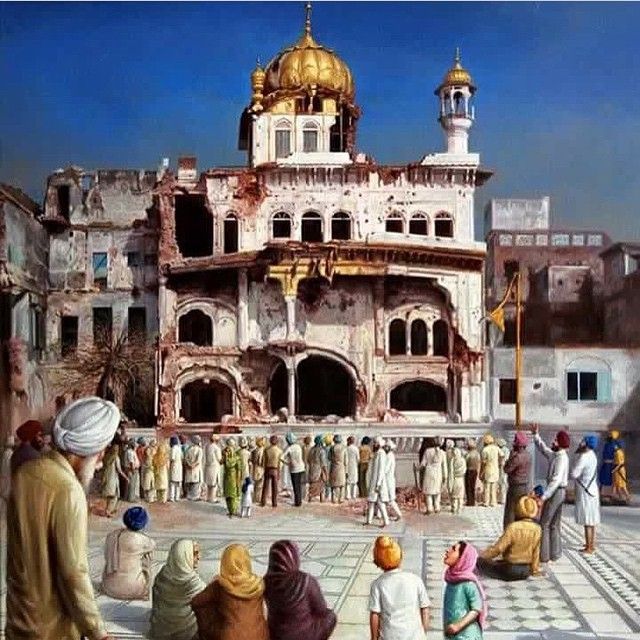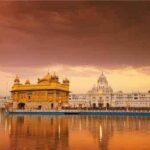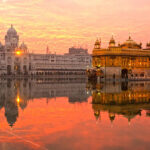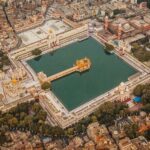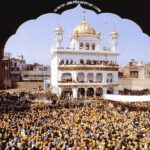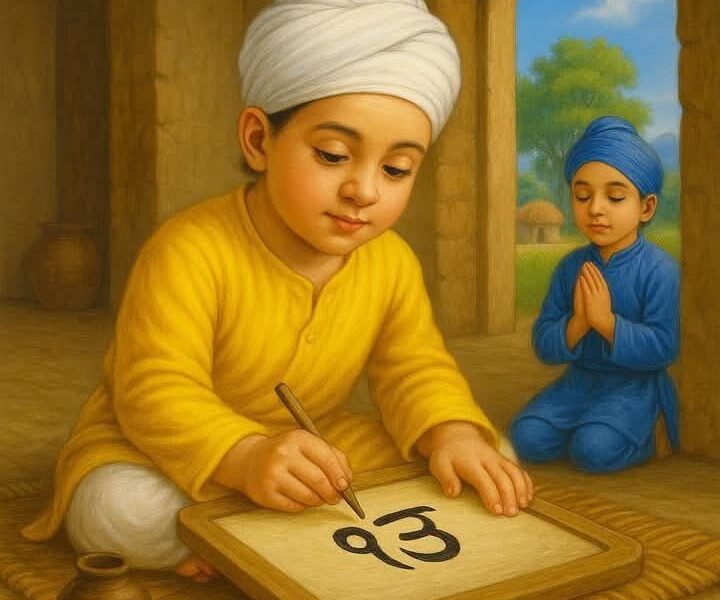A Journey from Concept to the Emerging Digital World, Akal Takht
Akal Takht Sahib, the highest temporal seat of the Sikhs, is located next to the Darbar Sahib. Amritsar, because of its special status in Sikh theology, is at the center of Indo-Sikh relations, particularly during the first week of June each year when the Sikhs observe the solemn martyrdom days from 1-6 June. In this article, Bhupinder Singh traces the history of Akal Takht Sahib and suggests using Internet technologies to adapt the sovereign and democratic Sarbatt Khalsa pattern to build a virtual mechanism that will keep up with the times, be fair to the Sikh Diaspora, and meet the needs of the Sikh community.
In Amritsar, there is a five-story structure called AKAL TAKHT in front of Sri Harmandir Sahib or Darbar Sahib. The building, which was originally known as “Akal Bunga,” was constructed by Guru Hargobind Sahib, the sixth master. Akal signifies timelessness, and Takht is a compound word made up of the letters Ta and kht, which respectively indicate base and line. In Persian, the term “Takht” signifies “throne.” The Akal Bunga became the focal point of the Sikh faith’s temporary authority, while Harmandir Sahib became the seat of its spiritual authority. Significantly, the Akal Takht Sahib’s height was purposefully kept lower than the Darbar Sahib’s.
Inception
Akal Bunga was started by Guru Hargobind Sahib in 1606 at the open area across the causeway from the Harmandir, and it was finished in 1609.
The platform, which was constructed on the embankment and measured about 10 feet, served as Guru Sahib’s throne. According to the Sixth Master’s design, the two flags at the Akal Takht Sahib represented the temporal and the spiritual. To remind people of the Piri Nishaan Sahib’s spiritual presence, it is raised higher.
He would gather with followers at the Akal Bunga in the afternoon. It gradually developed into a center for resolving private matters and was regarded as a desirable alternative to the courts in Delhi and Lahore. Guru Ji resolved disputes in a fair, timely, and impartial manner. He would visit Harmandir Sahib for prayers and hymn singing in the evening.
Historical Snapshot
The first Hukamnamma that the Guru issued from this location instructed the Sikhs to bring weapons and horses rather than money.
Five years after the brutal execution of Sikh General Banda Singh Bahadur in 1721, the Immortal Throne reappeared as the epicenter. Following Banda Singh Bahadur’s execution, the Tat Khalsa was in charge of the Akal Takht. Concerning the control of Akal Takht, a dispute occurred between Bandai Khalsa, Banda Singh Bahadur’s followers, and Tat Khalsa. The wife of Guru Gobind Singh, Mata Sundri Ji, designated Bhai Mani Singh as the custodian of the Akal Takht and charged him with mediating disputes between the two opposing factions.
After being rejected by prominent leaders during the Sarbatt Khalsa in 1733, the offer of Kapur Singh to become the new Nawab was finally made in recognition of his outstanding spirit of service. It was a difficult time, and the Sikhs’ survival depended on it. Following deliberations, a consensus was reached with the help of a Hukamnamma from the Guru Granth Sahib, and Nawab Kapur Singh was persuaded to accept the current situation. From their pre-existing crisis to becoming masters of their land and destiny, this was a pivotal moment for Sikhs.
He began taking modest measures toward the creation of the Khalsa Commonwealth while being guided by Gurbani—the Word of the Guru, learning from history, seeking consensus, and never acting unilaterally.
Ahmed Shah Durrani invaded India in 1756. In 1757, as he was travelling back from Delhi, Sikhs stole his wealth. He destroyed Akal Takht and Darbar Sahib out of rage, and he also filled the Sarovar with mud and filth. Following the custom of establishing consensus, Sikhs once more gathered in November 1760 at a Sarbatt Khalsa in front of the Akal Takht and declared theirs to be the theo-political voice of the centralized conscious will of the people and a resolution to seize Lahore, the Punjab Government.
Later, even under Maharaja Ranjit Singh’s leadership, the Sikh nation’s authority over the Darbar Sahib Complex, which includes Akal Takht, prevailed. For his misdeeds, he was also brought before Akal Takht Sahib.
This arrangement persisted after the establishment of the British Raj in 1850, but it was severely tarnished by the Jallianwala Bagh Massacre in 1919 when the British authorities infiltrated and took control of the SGPC and Akal Takht management with the help of their allies and manipulated the developments to suit them.
The Sikhs, not to be outdone, reacted to that action by igniting the Akali movement, and the British eventually returned possession to the democratically elected Shiromani Gurdwara Parbandhak Committee (SGPC). The creation of the SGPC provided the Sarbatt Khalsa a fresh twist because the elected body was envisioned as the representative body of the entire Sikh Brotherhood. This new arrangement altered how the community made decisions and chose the Jathedars, who serve as provosts of the Akal Takht.
